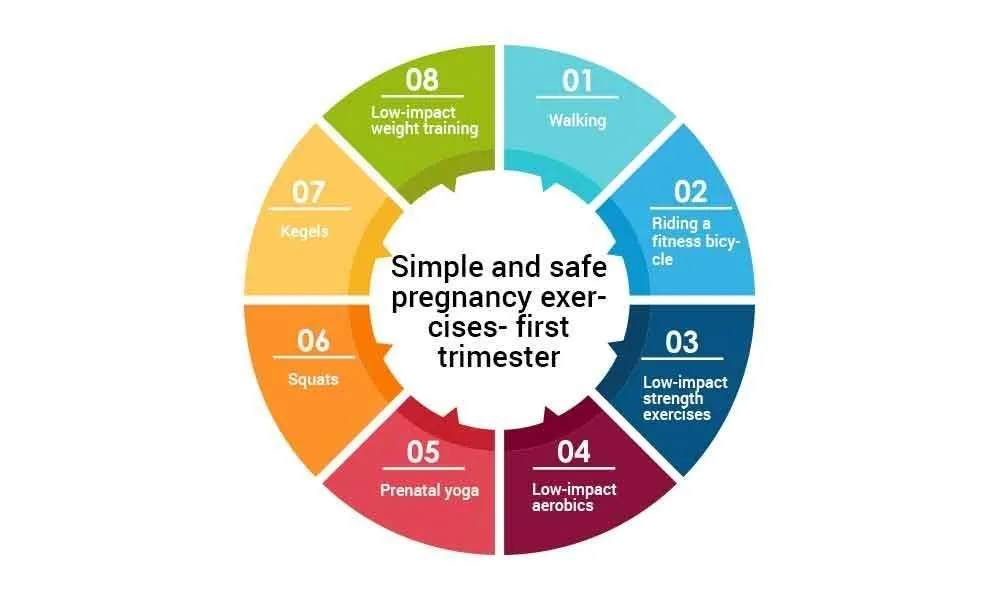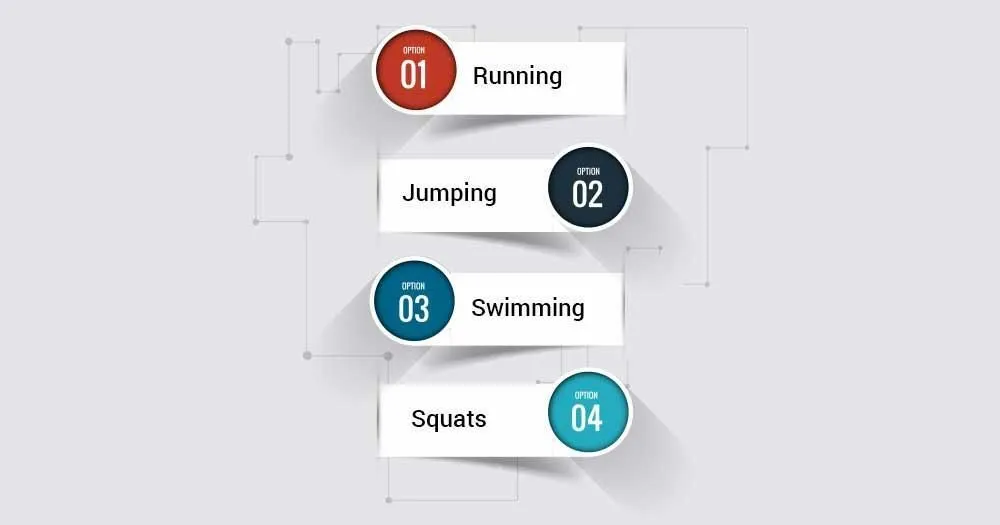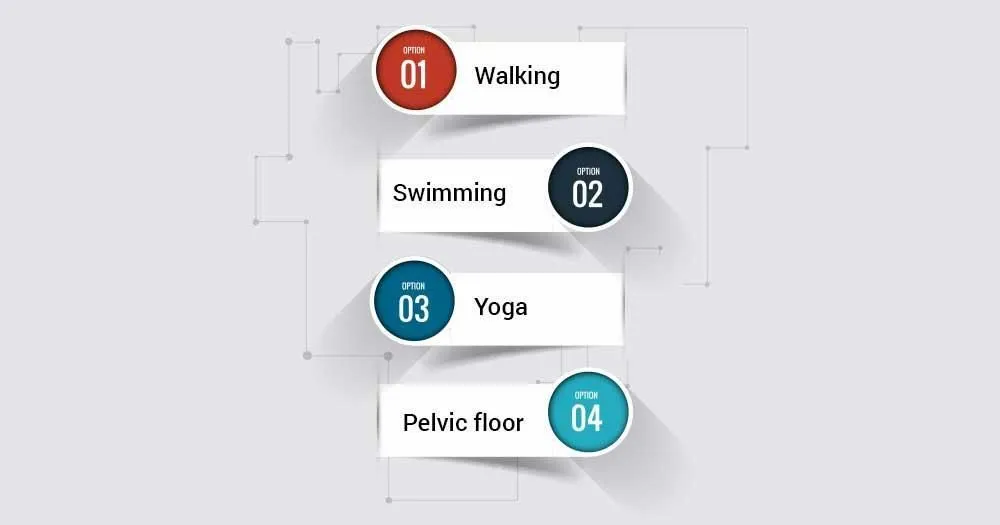There used to be a time when women were advised not to exercise during pregnancy due to the risk of miscarriage. However, research doesn’t back this claim. Not only is it safe to exercise during your expecting period, but it can also offer significant benefits to the mother and the baby.
We are explaining why you should pursue doing some easy aerobic workouts and simple yoga asanas in your home for the best results. They would keep you in shape and would also motivate you during the welcome change.
During your gestation period, your body produces 1.5 times the blood that it used before. This translates into more work for your heart because it has to work harder to circulate the blood around the body, especially around the newly formed organ- the placenta.
You might want to take a higher rate of blood circulation and increased blood sugar levels as two of the best benefits of exercising during the first trimester. You get even better results with a matching diet and fitness plan that is in line with your increased energy requirements and expenditures.
Working out during pregnancy has the following advantages:
1. Lesser backaches
2. More agility and flexibility
3. More muscular strength
4. Improved digestive and cardiovascular system
5. Reduction in swelling and inflammation
6. Reduction in water retention,
7. Improves mood
8. Improved sleeping and dieting patterns
9. Motivation to work every day
10. Shiny and healthier skin
11. More energy
12. Reduction in constipation
13. Better posture
14. Better weight management
15. Better cardiovascular health
16. Better management of labor pain
Note: You may do simple exercises from the very first day of your pregnancy, though you may keep the reps to a minimum. However, it is important to ask your healthcare professional about a list of specific exercises that you should not do during the period.
Here are some simple and easy exercises that you can do at home to keep you and your body in shape. You may start with them from your first trimester. The key is to stay disciplined and go for fewer reps and iterations than usual.
1. Walking
2. Riding a fitness bicycle
3. Low-impact strength exercises
4. Low-impact aerobics
5. Prenatal yoga
6. Squats
7. Kegels
8. Low-impact weight training
During the second trimester, you can go for fewer reps and activities every week. It is recommended to go for less exertion (max up to 30 minutes a day, not more than 5 times a week). Here are the exercises:
1. Running
2. Jumping
3. Swimming
4. Squats
Meditating (through Yoga and Zen) will also help you by a mile.
This is the most crucial phase of your pregnancy. We recommend that you do not do any strenuous exercise or anything that may cause you to bend or twist your body or lie down in a way that could hurt you. Here are some exercises that you could do in the third trimester of pregnancy:
1. Walking
2. Swimming
3. Yoga
4. Pelvic floor exercises
It’s beneficial to do some gentle exercises such as swimming, walking, and yoga while conceiving a baby. But you should avoid starting any difficult workouts that your body is not yet used to. You can leave the more strenuous workout regimes after the delivery.
Caution: If you experience any unpleasant symptoms, please stop and see your healthcare provider immediately.
Our fitness experts have offered the following list of exercises that you can do while expecting a baby. These workouts shall keep you fit, in shape, and agile enough to carry out the regular functions of work and housekeeping.
Here’s how you can do pelvic floor or Kegel exercise at home during pregnancy:
1. Pull your rectum inwards as if you were about to stop pooping.
2. Pull up the muscles of your vagina.
3. Slowly, go back to the original position.
4. Repeat several times.
Alternative way:
1. Lift your pelvic floor muscles inwards
2. The direction should be from your anus to your stomach.
3. Hold and release.
4. Repeat several times.
It is important to empty your bladder before doing these exercises.
Check with yourself if you can safely go all fours on a yoga mat.
1. Tuck your stomach in.
2. Keep your back straight.
3. Hold and release.
4. Repeat several times a day.
They are the easiest of all the exercises and can be done by all yoga enthusiasts too.
1. Sit on a yoga mat.
2. Breathe with one nostril
3. Keep the other nostril closed.
4. Alternate breathing pattern.
5. Repeat.
The key to doing this exercise is to focus on your respiratory system and the inside of your stomach.
There are several pregnancy ball exercises that you can do at home to keep yourself fit. These include Ball March, Ball Crunch, and Kneeling Ball Roll Outs.
You’ll be out of breath much faster when you work out during your gestation period. It is so because you’re breathing in more air to remove excess carbon dioxide from your blood that is released by the baby in the bloodstream.
A higher pulse or heart rate also shows that your body is adapting normally. Exercising 20 minutes a day, thrice a week is sure to offer all the positives as mentioned above. Simple exercises like brisk walking and doing some easy cardio exercises would also help.
Tip: This is incredibly better than just sitting around all day long.
Good question.
It is important to note that pregnancy is a responsible situation to be in and it also comes with a lot of precautions. Exercising during this period is welcome and you would find doctors advising expecting mothers to work out even as late as the onset of the third trimester.
Exercising or picking up a (reasonably) heavy object like a grocery bag, a toddler, or suchlike may not cause miscarriage. Working out can rather lower such risks and rather make mom and baby healthier. We recommend consulting a qualified healthcare expert for the best results.
Tip: You can also switch to wearing a fitness tracker to have a better status of your health vitals.
You should remember that stress to your heart is greater during pregnancy and it increases further when you exercise. This isn’t the time to go on a weight loss spree or to push yourself to your maximum level because everything you’d do may affect your gestation adversely.
You should avoid playing rugby, football, squash, tennis, diving, gymnastics, or doing certain yoga asanas, water skiing, horse-riding, and skating during this period. This isn’t the time to jump into a high-intense workout like HIIT or Pilate.
You should be comfortable with your workouts. Many women who aren’t used to physical activity prefer to start after the first trimester. It is usually the time when unpleasant symptoms such as fatigue and morning sickness have subsided.
Caution: If you have never tried these activities before, it’s better to just stay away from them for the best results. Avoid sports that may cause you to fall, be hit in the stomach, or be thrown out of balance. Guard yourself against them.
You might want to go for specialized pregnancy exercise classes near you that are conducted by fitness experts. If that is not possible, you may consult MevoLife’s fitness experts to know about the best workout regime that you could follow during your gestation. The same may be changed over time as per the trimester that you progress to.
Our virtual fitness experts advise you to start with gentle or moderate exercises for 10 minutes and then increasing it to 30 minutes a day as you tune yourself up. It is also important to follow this simple rule for an appreciable length of time or as long as advised by your healthcare expert.





